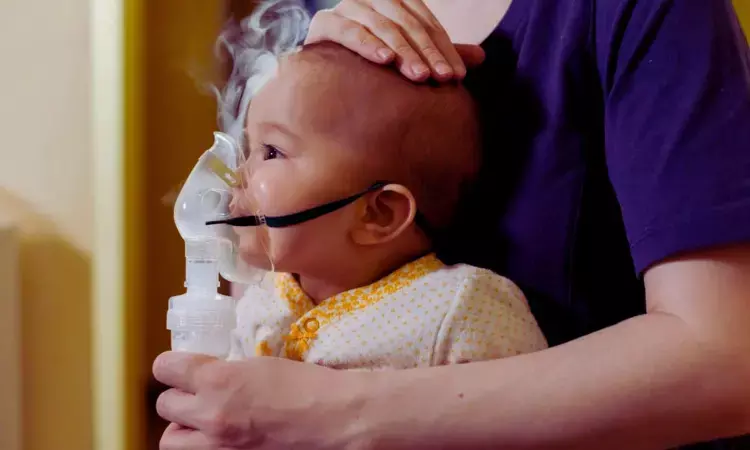- Home
- Medical news & Guidelines
- Anesthesiology
- Cardiology and CTVS
- Critical Care
- Dentistry
- Dermatology
- Diabetes and Endocrinology
- ENT
- Gastroenterology
- Medicine
- Nephrology
- Neurology
- Obstretics-Gynaecology
- Oncology
- Ophthalmology
- Orthopaedics
- Pediatrics-Neonatology
- Psychiatry
- Pulmonology
- Radiology
- Surgery
- Urology
- Laboratory Medicine
- Diet
- Nursing
- Paramedical
- Physiotherapy
- Health news
- Fact Check
- Bone Health Fact Check
- Brain Health Fact Check
- Cancer Related Fact Check
- Child Care Fact Check
- Dental and oral health fact check
- Diabetes and metabolic health fact check
- Diet and Nutrition Fact Check
- Eye and ENT Care Fact Check
- Fitness fact check
- Gut health fact check
- Heart health fact check
- Kidney health fact check
- Medical education fact check
- Men's health fact check
- Respiratory fact check
- Skin and hair care fact check
- Vaccine and Immunization fact check
- Women's health fact check
- AYUSH
- State News
- Andaman and Nicobar Islands
- Andhra Pradesh
- Arunachal Pradesh
- Assam
- Bihar
- Chandigarh
- Chattisgarh
- Dadra and Nagar Haveli
- Daman and Diu
- Delhi
- Goa
- Gujarat
- Haryana
- Himachal Pradesh
- Jammu & Kashmir
- Jharkhand
- Karnataka
- Kerala
- Ladakh
- Lakshadweep
- Madhya Pradesh
- Maharashtra
- Manipur
- Meghalaya
- Mizoram
- Nagaland
- Odisha
- Puducherry
- Punjab
- Rajasthan
- Sikkim
- Tamil Nadu
- Telangana
- Tripura
- Uttar Pradesh
- Uttrakhand
- West Bengal
- Medical Education
- Industry
Salbutamol via Inhaler Effective and Safer than Nebulisation in Pediatric Asthma: Study Finds

Paris: A recent study published in Respiratory Medicine has shown that salbutamol delivered via pressurised metered dose inhalers (pMDIs) with a holding chamber is just as effective as nebulisation in managing mild to moderate asthma exacerbations in children, with significant added benefits in younger patients.
"Children under the age of six who were treated with pMDIs experienced notably better outcomes, including higher hospital discharge rates (98.1% vs. 76.9%), fewer hospital admissions, shorter stays in the emergency department (1.7 vs. 4.0 hours), and required lower doses of salbutamol (0.10 vs. 0.81 mg/kg), along with fewer treatment-related side effects," the researchers reported.
Conducted over eight months across two centres, the study compared the effectiveness of salbutamol administration through pMDIs and nebulisers in children presenting to paediatric emergency departments (PED) with asthma flare-ups. Clara Lemaçon and Anne-Aurélie Lopes from Paris University, Paris, evaluated outcomes such as hospitalisation rates, time spent in the emergency department, salbutamol dosage required, and the incidence of side effects.
Based on the study, the researchers reported the following findings:
- The study included 384 children, primarily with mild or moderate asthma exacerbations.
- Overall discharge rates were similar between pMDI (82.7%) and nebulisation (81.6%).
- Among children under six years, pMDI led to a significantly higher discharge rate (98.1%) compared to nebulisation (76.9%).
- Hospitalisation rates were lower in the pMDI group than in the nebulised group.
- Children treated with pMDI had shorter emergency department stays (1.7 hours) compared to those who received nebulisation (4.0 hours).
- The required dose of salbutamol was significantly lower in the pMDI group (0.10 mg/kg) than in the nebulisation group (0.81 mg/kg).
- The pMDI group used less ipratropium and oral corticosteroids.
- Fewer treatment-related side effects were observed with pMDI use.
- The need for supplemental oxygen was lower in children receiving pMDI, particularly in those under six years of age.
The authors noted that while nebulisation has traditionally been the go-to method for acute asthma management in children, these findings strengthen the case for broader adoption of pMDIs with spacers in emergency settings. The comparable effectiveness, coupled with lower drug exposure and fewer side effects, makes it a safer and more efficient choice, especially for younger children.
“The use of pMDIs not only ensures clinical outcomes on par with nebulisers but also helps reduce hospital admissions and medication side effects,” the researchers stated. They also emphasised the importance of training children and caregivers in proper pMDI use, which could contribute to lowering emergency visits for asthma attacks in the long term.
"This study adds to a growing body of evidence supporting the use of pMDIs as a frontline treatment for paediatric asthma exacerbations, potentially prompting a shift in emergency care protocols for children with respiratory issues," the researchers concluded.
Reference:
Lemaçon, C., & Lopes, A. (2025). Inhalers or nebulisation of salbutamol in childhood asthma exacerbations in emergency departments. Respiratory Medicine, 108152. https://doi.org/10.1016/j.rmed.2025.108152
Dr Kamal Kant Kohli-MBBS, DTCD- a chest specialist with more than 30 years of practice and a flair for writing clinical articles, Dr Kamal Kant Kohli joined Medical Dialogues as a Chief Editor of Medical News. Besides writing articles, as an editor, he proofreads and verifies all the medical content published on Medical Dialogues including those coming from journals, studies,medical conferences,guidelines etc. Email: drkohli@medicaldialogues.in. Contact no. 011-43720751


